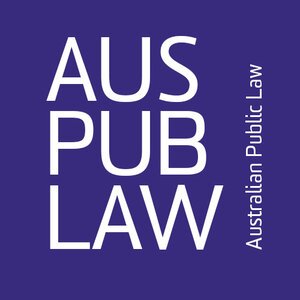
Index
- March 2025 2
- February 2025 2
- January 2025 1
- November 2024 5
- October 2024 2
- August 2024 3
- July 2024 2
- June 2024 4
- May 2024 1
- April 2024 5
- March 2024 5
- February 2024 4
- January 2024 2
- December 2023 5
- November 2023 7
- October 2023 4
- September 2023 5
- August 2023 3
- July 2023 5
- June 2023 3
- May 2023 5
- April 2023 3
- March 2023 5
- February 2023 9
- December 2022 9
- November 2022 3
- October 2022 7
- September 2022 4
- August 2022 8
- July 2022 3
- June 2022 4
- May 2022 9
- April 2022 7
- March 2022 2
- February 2022 5
- December 2021 7
- November 2021 12
- October 2021 9
- September 2021 14
- August 2021 9
- July 2021 5
- June 2021 9
- May 2021 4
- April 2021 3
- March 2021 13
- February 2021 7
- December 2020 1
- November 2020 4
- October 2020 4
- September 2020 5
- August 2020 5
- July 2020 8
- June 2020 5
- May 2020 11
- April 2020 6
- March 2020 5
- February 2020 3
- January 2020 1
- December 2019 1
- November 2019 3
- October 2019 2
- September 2019 2
- August 2019 4
- July 2019 2
- June 2019 2
- May 2019 5
- April 2019 8
- March 2019 2
- February 2019 3
- December 2018 1
- November 2018 9
- October 2018 2
- September 2018 5
- August 2018 3
- July 2018 3
- June 2018 2
- May 2018 5
- April 2018 7
- March 2018 3
- February 2018 4
- December 2017 3
- November 2017 7
- October 2017 4
- September 2017 3
- August 2017 3
- July 2017 1
- June 2017 3
- May 2017 2
- April 2017 3
- March 2017 4
- February 2017 3
- January 2017 1
- December 2016 3
- November 2016 4
- October 2016 2
- September 2016 1
- August 2016 3
- July 2016 1
- June 2016 3
- May 2016 3
- April 2016 4
- March 2016 4
- February 2016 3
- January 2016 1
- December 2015 2
- November 2015 4
- October 2015 4
- September 2015 4
- August 2015 3
- July 2015 6
- June 2015 6
Proportionality and Facts in Constitutional Adjudication book forum - Author’s reply
Anne Carter
I am honoured and humbled to have such an eminent panel engage with my book, Proportionality and Facts in Constitutional Adjudication. As I will explain below, the motivations for this book stemmed in part from my time as a practising government lawyer, so I’m particularly delighted that this book forum includes two practitioners of public law, along with a leading comparative constitutional law scholar. Each panellist has engaged thoughtfully with the substance of the book and has raised a number of distinct issues. In this post I will explain the motivations behind the book and its main themes and findings, as well as responding to the helpful contributions from the three panellists. In doing so I will sketch some future directions about the ongoing conversation about facts in proportionality reasoning (and public law more generally).
The Factual Questions in Legitimacy Testing - Proportionality and Facts in Constitutional Adjudication book forum
Samuel Murray
Dr Anne Carter’s Proportionality and Facts in Constitutional Adjudication is a timely and welcome addition to the perpetually growing commentary concerning the advent of structured proportionality in the High Court’s jurisprudence of the implied freedom of political communication.
As Dr Carter notes throughout the book , a bare majority of the High Court in McCloy v New South Wales (2015) 257 CLR 178 dramatically changed the approach to testing proportionality in respect of the implied freedom by adopting a structured, multi-faceted approach to proportionality testing, effectively in lieu of the prior verbal formulation from Lange v Australian Broadcasting Corporation (1997) 189 CLR 520. given how extensively it changed the approach to the implied freedom. McCloy heralded a new wave of both academic commentary and case-law about the merits and application of the new formulation. This book does an excellent job at building out the former and offering guidance for the latter in respect of the use of facts in the new world of implied freedom proportionality testing.
Challenges for State Parties Engaged in Proportionality Litigation - Proportionality and Facts in Constitutional Adjudication book forum
Mike Wait
Dr Anne Carter’s new book, Proportionality and Facts in Constitutional Adjudication, makes a substantial and timely contribution to our understanding of a range of issues emerging in the burgeoning field of proportionality litigation. The focus of the book is on sources of evidence, burdens of proof and aspects of procedure. However, the book’s real strength is that it locates what are ultimately practical litigious issues within a sophisticated account of the evolution of the implied freedom of political communication in Australia and an appreciation of comparative approaches drawn from jurisdictions which have long wrestled with these issues.



